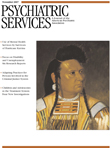Clinical Manual of Pediatric Psychosomatic Medicine: Mental Health Consultation With Physically Ill Children and Adolescents
The multifaceted role of a pediatric psychosomatic medicine consultant extends beyond helping the patient to cope with emotional adjustments of illness or addressing acting-out behaviors that may ensue. Interventions include addressing physical symptoms, helping to manage physical pain, considering side effects of medication, and minimizing potential drug interactions. The consultant's role goes beyond the needs of the child and encompasses providing support and education for families as well as serving as, in the truest sense of the word, a liaison among the patient, the family, and the primary medical team. Written by Richard Shaw and David DeMaso, Clinical Manual of Pediatric Psychosomatic Medicine helps to navigate these complexities.
Introductory chapters describe general principles and techniques of assessment. They discuss forensic issues, particularly the thorny issue of parental consent and its exceptions among pediatric patients. Subsequent chapters each address a specific psychiatric disorder: delirium, mood disorders, anxiety disorders, somatoform disorders, and pain. Each chapter takes a pragmatic approach that attempts to untangle the diagnostic dilemmas that take place at the mind-body interface. Depression may present with nonspecific somatic complaints, such as chronic abdominal pain and headaches, rather than classic symptoms. Stress related to illness can trigger anxiety symptoms to form a picture of "medical posttraumatic stress disorder," an increasingly recognized entity in children.
More complicated medical problems and their accompanying psychological difficulties are discussed in later chapters. Other chapters address pediatric oncology and organ transplantation. The section on palliative care describes dying children who will "dose themselves," tempering sadness with moments of relief: crying one minute and playing the next. Much advice is provided on alleviating the child's distress from medical procedures. Simple techniques include preserving the child's room as a safety zone and giving the child a modicum of control, such as letting him or her choose which arm to use for blood draws. Hypnosis, a technique particularly helpful for children given their natural imaginative abilities, is presented as an option.
Because this book is a manual, its focus is on practical applications, with multiple sidebars outlining salient points. These points include the more complex issues, such as psychodynamic theories and developmental perspectives. Younger children may misinterpret what is occurring as punishment for bad behavior. Alternatively, the child may consciously or unconsciously use the illness to avoid stressful academic and social activities. For adolescents, physical illness can interfere with the crucial developmental tasks such as gaining autonomy from parents and fostering social acceptance from peers. The frequent result is treatment nonadherence, a frustrating but common behavioral outcome in pediatric medicine.
The concluding chapters primarily focus on treatment, both for the individual and for the family. Parents may have guilt and adjustment difficulties because of the loss of a "complete child." Siblings, often overlooked, have their own set of questions and conflicting emotions. There is a progressive organization of family life around the ill child. Advice is given on how to reestablish routines and regain equilibrium so that illness does not consume family life. There is extensive information on pharmacology, including a section on pain management and a more general chapter discussing uses of medication in particular disease states.
Although the book is primarily geared toward psychiatrists working in a hospital consultation setting, there is much here that is applicable to those who work in outpatient settings. At best, most children have minor medical issues at some point, and at worst, some have a chronic medical illness or have family members with such problems.
One notable weakness of the book is that data from studies of children are often described interchangeably with data from adult studies. There is little attempt to distinguish the two as the authors try to fill in the gaps in this relatively young and uncharted field. Despite this limitation, this book succeeds in being both highly readable and very informative, providing useful insights and practical advice for treating this challenging population.



